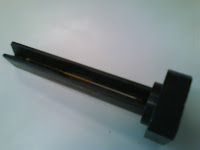Hello my fellow peepz!! How have all of you been doing? I’m sure everyone is going through different experiences every single day right? For me, so far, I have learnt more than what I have expected. Even if it is tiring me out almost everyday.
So for this post, I will be talking about what I have been learning in the Clinical Chemistry section.
The basic thing that we need to do is to label and load the samples correctly. Thus, we need to know what tubes is needed for which tests as different tubes is different. For EDTA tubes, it is mainly used for hematology section and GHB. Heparin, Gel and plain tubes can be use for many of the tests. Fluoride tube is used mainly for glucose, particularly fasting.
Before we label, we are to check if the specimens is sufficient to be load onto the machines. If it is more than half of the tube, it is considered sufficient. For the sufficient samples, after labeling, we can load directly into the pre-analytical machine which will be explained in further detail later on.
In this section, there are three main machines or equipments that are used to process the samples. They are the MPA, SWA and Cobas where MPA is used for the pre-analytical processing and SWA and Cobas are used for analysis. Examples of pre-analytical process done on the MPA are centrifugation, aliquoting and labeling. After going through the MPA, the samples will either proceed to the SWA or be aliquot out to be process in the Cobas. So what determines the samples to be run in the SWA or Cobas respectively? Well, it all depends on the different types ordered for that specific samples. Most of the tests can be run on either machines. However, there are some tests that are only specific to SWA or Cobas. Some examples are shown below:
Tests that can only be run in SWA:
- Hepatitis panel
- Cortisol(Serum)
- AFP
- CEA
- PSA
- Pro-BNP
- AHAV total
- HIV
Tests that can only be run in Cobas:
- TDM
- CRP
- GHB
- Anaemia panel 1 & 2
- Magnesium
- Amylase
- Urine tests
- Fluid tests
- C3 & C4
- Direct Bilirubin
- RF
Other tests like renal panel and liver function test can be load on both machines.
There are several circumstances when we are not able to use the MPA for the pre-analytical processing. It could be due to some technical breakdown or when the sample given is insufficient for the MPA to process.
If it is less than half, we are to spin it down and aliquot the serum into the secondary tube. If it is too little, we will use the hitachi cups. Then, we have to load the tube or cups directly to either the SWA or Cobas, depending on the tests ordered. One thing to take note during putting of tubes to each machine manually is that the tubes must not be capped.
For samples requesting for special chemistry tests, the serum is required to be stored in the fridge or freezer. These also depend on the different tests requested. Some examples are shown below:
In freezer – ACTH, PTH and TRAB
In fridge – HbsAg, HCV, HIV, TPO, CA199, Syphillis and Cortisol(urine)
For samples that request for HbsAg, HIV and cortisol(urine), the request form is needed to be kept in the special chemistry bench.
See you all soon!!
Anw, happy fasting to all of my muslim frens!! Shall meet up to break fast together aite??
Nur Sofieyana
TG02


 Streptex Kit
Streptex Kit





